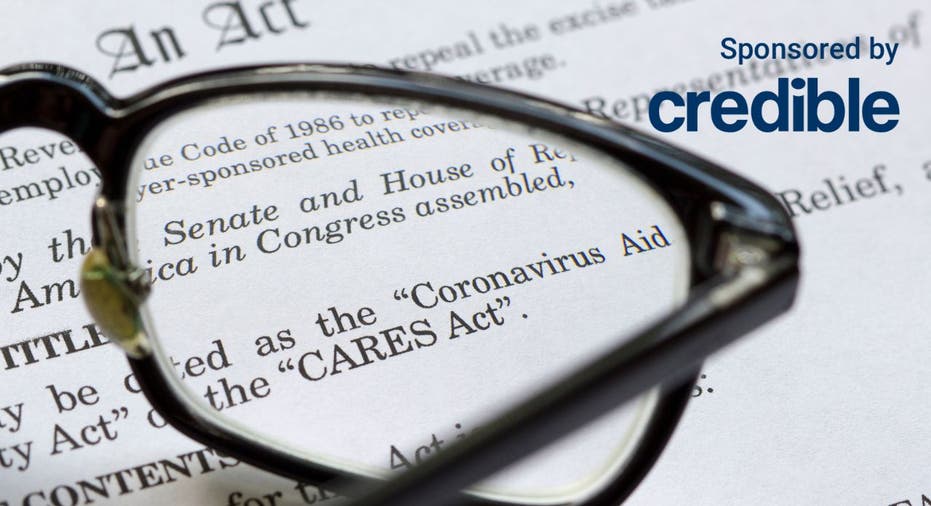We at Credible Operations, Inc., NMLS Number 1681276, henceforth referred to as “Credible,” want to arm you with the knowledge and self-assurance you need to make progress in your financial situation. All of our thoughts are our own, even though we do advertise products from our partner lenders who pay us for our services.

()
Due to the COVID-19 epidemic, federal student loan payments have been suspended since March 2020. During the hiatus, the government also reduced the interest rate on federal student loans to 0%. Only borrowers with federal student loan debt are subject to the payment suspension.
President Joe Biden renewed the student loan deferral until August 31 when the payments were due to resume in April 2022. This will be the first time some federal borrowers have made loan payments in more than two years, assuming the postponement isn’t extended further.
Borrowers of federal student loans will start paying interest as soon as their regular loan installments restart. Your interest rate will remain the same when payments resume unless you merged your federal loans during the deferment period; otherwise, it will change. After the payment suspension is over, you might think about refinancing your student loans. Visit Credible to compare rates from various private student loan lenders and learn more about refinancing student loans.
Student loan deferment: Whats happened so far What to do with your student loans before Aug. 31 Will the CARES Act be extended? DEFERRING STUDENT LOANS: WHAT HAS SO FAR HAPPENED President Biden has eliminated more than $25 billion in student loan debt for 1.3 million borrowers through executive order. Borrowers who suffered from school closures or have a chronic handicap have received the majority of forgiveness.
For instance, the Borrower Defense to Repayment program allowed the U.S. Department of Education to cancel $7.9 billion in student loans for 690,000 borrowers. Borrowers must be able to prove that the institution they attended misled them, behaved improperly, or broke state law in relation to their loans in order to be eligible for the Borrower Defense.
Additionally, $8.5 billion in loan forgiveness was provided by the federal government to borrowers who have a permanent disability. Additionally, the Public Service Loan Forgiveness (PSLF) program, which grants loan forgiveness to borrowers who work in public service, has helped 127,000 borrowers.
The U.S. Department of Education has also modified income-driven repayment (IDR) programs to make it easier for more students to be eligible for loan forgiveness. Additionally, President Biden ran on a platform of universally forgiving all federal student debt borrowers of $10,000.
Federal debtors haven’t yet experienced widespread student loan forgiveness, though. Student loan debtors should be ready to begin repaying their loans, with interest, on September 1 assuming the federal loan deferment expires on August 31. You might think about refinancing your student loans once payments start up again. Using Credible, you can quickly compare prequalified rates from several lenders.
HOW TO USE YOUR STUDENT LOANS BY AUGUST 31 The current federal student loan deferment is scheduled to expire on August 31; nonetheless, you should start making arrangements to repay your debts right away. Before your loan payments resume in September, you can do the following:
Make contact with the loan servicer. The U.S. Department of Education advises getting in touch with your loan servicer to verify that your profile and contact details are current. You can do this in your StudentAid.gov account as well as on the website of your loan servicer. Sign up for auto-debit. Review your auto-debit enrollment to make sure your payment information is accurate. Alternately, you can sign up for auto-debit for the first time to make your monthly payments simpler. You can enroll with your student loan servicer or amend your information. Discover all of your available loan alternatives. You can minimize your monthly payments and possibly become eligible for loan forgiveness by enrolling in an IDR plan. The StudentAid.gov Loan Simulator tool can be used to explore your options and discover ways to reduce your debt more quickly. While interest is suspended, make additional payments. By making additional payments while the interest rate is at 0%, you can advance your federal loans farther. If you make additional payments, the entire amount will be applied to the loan principal. THE CARES ACT, WILL IT BE EXTENDED? The federal student loan deferment may have many borrowers wondering if it will continue until August 31. President Biden may have already four times prolonged the deferment during his presidency, although no one is certain at this moment.
Another extension may be feasible, according to Miguel Cardona, the secretary of education for the United States.
In June, he told a Senate subcommittee, “I don’t have any information on when it will stop or what the conversations are about when it’s going to be lifted.”
“I am aware that our scheduled date may be postponed. Alternatively, it might start there. But I will add that our borrowers will be given plenty of advance warning.”
Activist organizations and leading Democrats have also put pressure on President Biden to prolong the student loan deferment and offer more substantial debt elimination. Therefore, it appears that the CARES Act will be extended, but it is uncertain whether or not this will actually happen.







